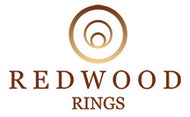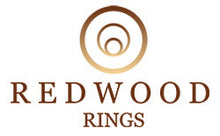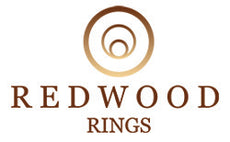Do Men Wear Engagement Rings?

The tradition of engagement rings has long been steeped in history, with its roots tracing back to ancient times. Traditionally, it has been women who wear engagement rings as a symbol of their forthcoming nuptials. However, contemporary society is witnessing a shift in this tradition, with an increasing number of men choosing to wear engagement rings. This change reflects broader societal movements towards gender equality and the breaking down of traditional gender roles.
The Emergence of Male Engagement Rings
The emergence of male engagement rings marks a significant shift in societal norms and traditions surrounding engagements and marriage. This trend reflects a growing desire for equality and reciprocity in relationships, challenging the long-standing convention that only women wear engagement rings. As gender roles become more fluid and the concept of partnership evolves, an increasing number of men are embracing the idea of wearing a ring to signify their commitment and love.
This shift is not only about fashion or jewelry; it's a deeper reflection of changing attitudes toward marriage, equality, and personal expression. Male engagement rings vary widely in design, from simple and understated bands to more elaborate pieces featuring diamonds or other gemstones, allowing individuals to choose rings that resonate with their personal style and the significance of their relationship. The rise of this trend is also buoyed by celebrities and influencers who have publicly embraced the practice, further normalizing and promoting the acceptance of male engagement rings in mainstream culture.
Did you know?
A 2019 survey by The Knot revealed that about 6% of men in heterosexual relationships wear engagement rings. The trend is notably more prevalent among same-sex couples, highlighting a shift towards more inclusive engagement traditions.
Cultural Acceptance
Cultural acceptance of male engagement rings varies significantly across different societies and communities, influenced by deeply ingrained traditions, societal norms, and changing perceptions of gender roles and relationships. In some cultures, the idea of men wearing engagement rings is a natural extension of the evolving views on marriage and partnership, embraced as a sign of equality and mutual commitment. These societies tend to view engagement rings not just as a female adornment but as a symbol of love and intention to marry that applies equally to both partners.
In contrast, other cultures may still find the concept of male engagement rings novel or unconventional. In these contexts, engagement rings have traditionally been seen as a symbol of a man's promise to a woman, with no reciprocal gesture expected from the woman. However, even in these environments, attitudes are gradually shifting. Exposure to global trends through media, the influence of celebrities wearing engagement rings, and conversations about gender equality are slowly changing perceptions.
The acceptance of male engagement rings is also reflective of broader societal shifts towards questioning and redefining traditional gender norms. As discussions around equality and partnership in relationships become more mainstream, there's a growing recognition that symbols of love and commitment should not be confined by gender.
Moreover, the rise of social media and the digital sharing of personal milestones have played a significant role in increasing the visibility of male engagement rings. Couples sharing their engagement stories and choices regarding rings contribute to normalizing the practice, encouraging others to consider it.
Did you know?
Responding to the growing demand for male engagement rings , the jewelry industry has diversified its offerings with designs that include a wide range of styles, materials, and gemstones, catering to varied personal tastes.

Celebrity Influence
The influence of celebrities on the trend of male engagement rings cannot be overstated, as public figures often set the pace for fashion and cultural norms. When celebrities choose to wear engagement rings, they lend visibility and prestige to the practice, inspiring fans and the wider public to reconsider traditional norms surrounding engagements. High-profile engagements often feature prominently in media coverage, and when these involve male celebrities proudly wearing engagement rings, it sends a powerful message that challenges conventional gender roles. This celebrity endorsement not only normalizes the idea for a broader audience but also makes it more accessible and desirable. The impact of such endorsements is amplified by social media, where images and stories of celebrity engagements can go viral, reaching millions of people worldwide. This visibility helps to shift public perception, making the concept of male engagement rings a more widely accepted and celebrated choice.
Did you know?
High-profile male celebrities like Ed Sheeran and Michael Bublé wearing engagement rings have significantly contributed to popularize the trend, challenging traditional norms and promoting broader acceptance.
Engagement Rings
The history of engagement rings traces back thousands of years, with its roots deeply embedded in ancient civilizations. The tradition is believed to have originated in Ancient Egypt, where rings were worn on the fourth finger of the left hand, which was thought to contain the "vena amoris," or the vein of love, directly connected to the heart. These early rings, often made of braided reeds or leather, symbolized eternal love and life. The practice evolved over centuries and was adopted by the Romans, who introduced the betrothal rings, signifying a man's intent to marry. The Romans also started the custom of inscribing messages on these rings, a precursor to modern engraving practices.
The formal use of a diamond engagement ring was popularized in 1477 when Archduke Maximilian of Austria commissioned a diamond ring for his betrothal to Mary of Burgundy. This act set a trend among European aristocracy and nobility. However, it wasn't until the discovery of diamonds in South Africa in the late 19th century and the subsequent marketing campaigns by diamond companies, most notably De Beers in the 20th century, that diamond engagement rings became ingrained in global culture. Their slogan, "A Diamond is Forever," successfully established the diamond ring as a symbol of enduring love and the standard for engagements.
Throughout its history, the engagement ring has undergone various transformations, reflecting changes in social norms, economic conditions, and fashion trends. From simple iron bands in Ancient Rome to the elaborate gemstone-encrusted rings of the Renaissance and to today's wide variety of styles, the engagement ring continues to hold a significant place in the rituals of love and commitment, symbolizing promise, partnership, and a future together.





